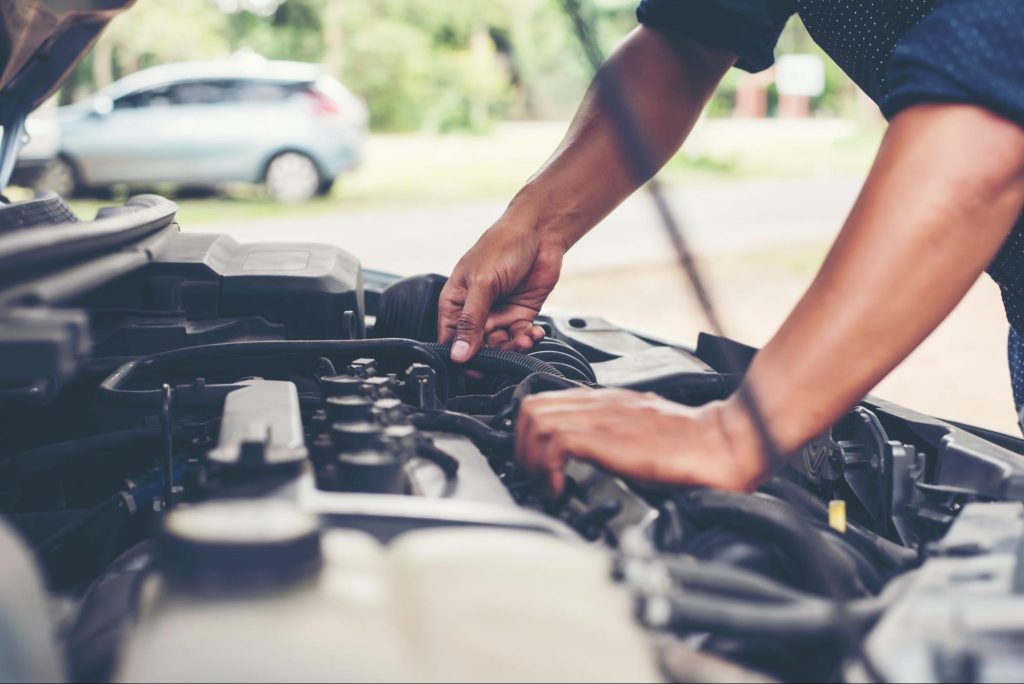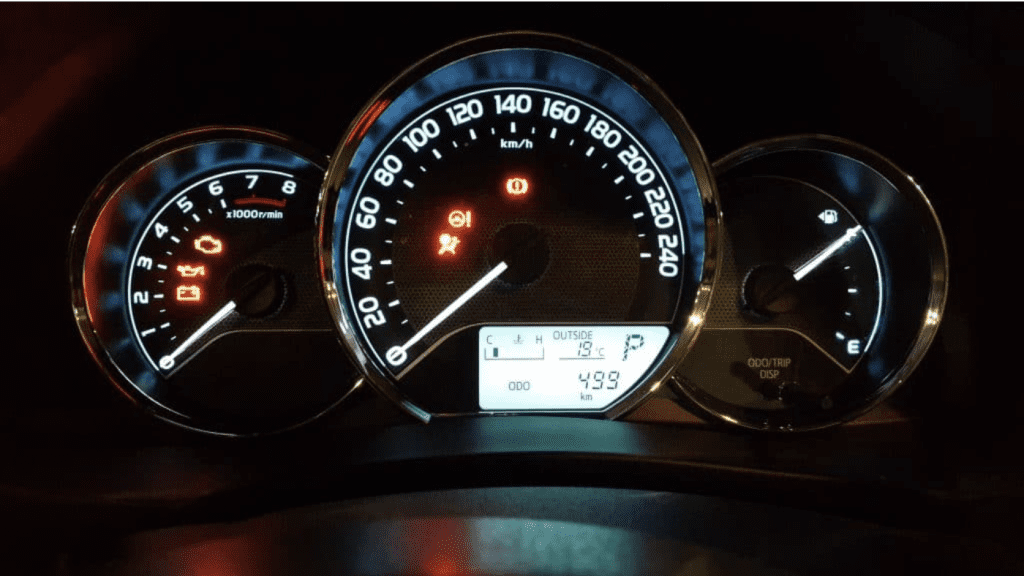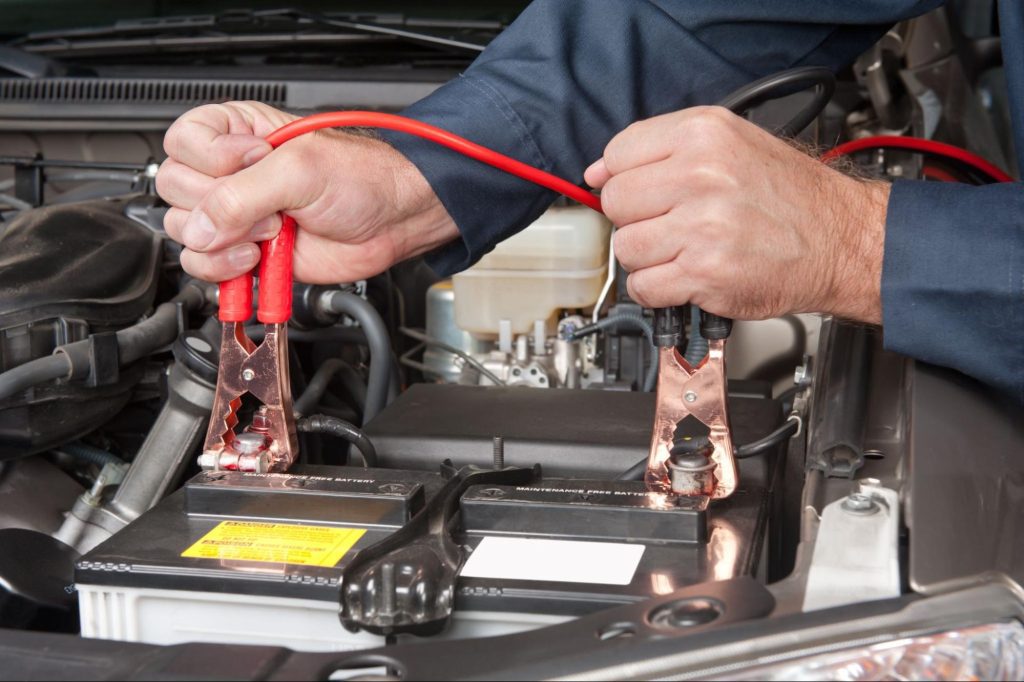How To Reset Your ECU Without A Scanner?
Imagine yourself ready for a drive, but your car has other ideas—the frustrating glow of a check engine light greets you. Your car’s brain, the Engine Control Unit (ECU), dictates its functionality but sometimes needs a refresh to perform at its best. This is your guide to resetting your ECU, even when you don’t have a scanner.
What does an ECU do, you ask? The ECU’s delicate fuel injection, ignition timing, and emissions symphony are pivotal for your vehicle’s well-being. Periodically, this powerhouse requires a reset to clear any hiccups affecting your car’s performance. Here, you’ll learn why an occasional ECU ‘reboot’ is beneficial and vital.
Dive into the telltale signs that warrant a reset—from erratic engine behavior to dwindling fuel economy. We then shift gears to offer practical, scanner-free methods to reset your ECU, ensuring your vehicle regains its optimal state. Get ready to explore a step-by-step guide that will empower you to confidently handle the reset process.
If your ECU fails, SOLO Auto Electronics can help with repair!
Why Resetting Your ECU Can Be Beneficial
Resetting your ECU, or Engine Control Unit, might seem like a small action, but it can have notable benefits for your vehicle. The ECU is essentially the brain of your car, controlling and regulating many engine functions, including fuel efficiency, ignition timing, and idle speed. Over time, your vehicle’s performance can suffer due to changes in driving habits or after modifications to the engine systems. Resetting the ECU can help clear stored error codes and adapt the engine’s performance to its current condition, potentially restoring optimal performance.
A reset can also be helpful after auto repairs to ensure the ECU ‘learns’ the changes made. It can effectively solve issues related to the check engine light when no mechanical problems exist. Furthermore, after resetting, the ECU will begin a new process to relearn and adjust to your driving style, which can lead to improved fuel efficiency and smoother rides.


Explaining the Importance of the ECU in Your Vehicle
The Electronic Control Unit (ECU), also known as the engine control module, is the computer that manages most of a car’s essential functions. It gathers data from a network of sensors throughout the vehicle and uses this information to adjust systems like fuel injection and ignition timing for optimal engine performance. The importance of the ECU cannot be overstated; it is the cornerstone of modern automotive technology that supports the efficient operation of your vehicle.
An ECU that functions correctly ensures that your car runs reliably, meets emissions standards, and provides the power and fuel economy you expect. Any disruption in the ECU’s operations can lead to poor performance, increased exhaust emissions, and increased fuel consumption. Therefore, ensuring the ECU is correctly calibrated and functioning is key to keeping your car in top condition.
Understanding the Need for a Reset
There are several circumstances when an ECU reset might be necessary. A common reason is when the ECU generates diagnostic trouble codes (DTCs) indicating issues with the engine or other systems. Even after the problem is mechanically resolved, the codes might remain stored in the ECU’s memory, causing the check engine light to come on.
Another scenario requiring a reset is after engine or exhaust system modifications. Such changes can affect the vehicle’s performance, and a reset allows the ECH to recalibrate for these new conditions. Moreover, if your vehicle exhibits unexplained poor performance or reduced fuel efficiency, a complete ECU reset is often a good initial step before seeking assistance from a qualified mechanic.
While typically performed with a diagnostic tool like an OBD-II scanner, resetting the ECU can also be done without one. The process involves a few steps that remove power from the ECU and force it to reboot, clearing any stored error codes and adaptive learning settings. However, it’s essential to note that this should be done cautiously as it could also erase other settings like radio presets and climate controls.
Signs That Your ECU Needs to Be Reset
Recognizing when your car’s ECU needs resetting is crucial for maintaining optimal performance and avoiding potential long-term issues. Here are some signs that suggest the ECU may need a reset:
Check Engine Light Illumination
One of the most immediate indications that your ECU could require a reset is the illumination of the check engine light. Typically found on your dashboard, this light is your vehicle’s way of telling you it has detected an error code. While it doesn’t always mean that an ECU reset is necessary, it’s a good indication that your car has recognized an issue that must be investigated. After addressing the underlying mechanical problem, if the light remains on, an ECU reset could be the next course of action.


Poor Fuel Efficiency
A sudden decrease in fuel efficiency could be related to a variety of issues, but one of the culprits could be your ECU. As the ECU controls fuel injection, a displacement in its calibration might result in the engine consuming more fuel than required.
If there are no apparent mechanical problems and maintenance such as changing air filters or spark plugs hasn’t resolved the issue, resetting the ECU should be considered to improve fuel efficiency.
Engine Misfires or Stalling
If your engine starts to misfire or stall periodically, it could be a sign that the ECU is not properly managing the engine’s timing or fuel delivery. These symptoms can emerge without warning and suggest that the engine is not operating within the parameters set by the ECU.
Before taking more invasive measures, resetting the ECU can help clear any errors that may be disrupting the correct functioning of the engine.
Loss of Power or Poor Performance
Your vehicle may also exhibit a general loss of power or poor performance, signifying that the ECU isn’t optimizing the engine’s operations effectively. This can manifest as sluggish acceleration, difficulty climbing hills, or a sense that your car is just not driving ‘right.’ An ECU reset can recalibrate the unit, potentially restoring power and improving overall performance, ensuring the engine runs more efficiently in harmony with your driving style.
An ECU reset can be a straightforward solution when experiencing these signs. However, remember that these issues can have multiple causes, and the advice of a qualified mechanic may be necessary if an ECU reset does not resolve the problems.
A method you can use to reset the ECU without a scanner is known as the “Battery Disconnect Method.” Here is a step-by-step guide:
- Turn off your vehicle. Make sure that all electronic devices are off, and the ignition is switched to the off position.
- Locate the battery. Usually found under the hood, the battery will have positive (+) and negative (-) terminals.
- Disconnect the negative terminal. Use a wrench to loosen the nut on the negative terminal and remove the cable. Take care not to let the wrench contact both the negative and positive terminals at the same time.
- Wait for a period of time. Leave the negative battery terminal disconnected for about 15 minutes to allow the ECU to reset. This waiting period ensures that the ECU’s capacitors are fully discharged, clearing any adaptive memory.
- Reconnect the negative terminal. After waiting, securely reattach the negative battery cable and tighten the nut.
- Restore your settings. Once the ECU has been reset, you might need to enter a radio code or reset any custom settings like the clock and climate controls.
Keep in mind that this process will also reset other electronic systems in the vehicle. If you’re not comfortable performing this task or if the issues persist after the reset, it’s advisable to consult a qualified mechanic.
Methods to Reset Your ECU Without a Scanner
Resetting the ECU (Engine Control Unit) in your vehicle can often be done without the use of a diagnostic tool or OBD-II scanner. This process can address various issues, from check engine lights to poor fuel efficiency and performance concerns. The method typically involves disconnecting the battery and allowing the system to reset by clearing stored error codes and adaptive memory. This could restore your vehicle’s operation to its default state. It’s important to note that this might not fix underlying mechanical issues, and a qualified mechanic should be consulted if problems persist.
Disconnecting the Negative Battery Terminal
To begin the reset process, it’s necessary to disconnect the battery, specifically the negative battery terminal. This part of the procedure is critical as it severs the power supply to the ECU, thereby facilitating the reset. To do this, one must turn off all electronic devices and the ignition. Then, using a wrench, loosen the nut on the negative terminal and detach the cable. Caution is imperative here to avoid concurrent contact between the wrench and both battery terminals, as this may cause a short circuit.


Waiting for a Certain Period of Time
After disconnecting the negative battery terminal, waiting for a predetermined period is essential to ensure the ECU fully resets. Generally, a waiting time of about 15 minutes is recommended to enable the ECU’s capacitors to discharge completely. During this period of inactivity, the ECU can effectively clear its memory, removing any stored error codes and adaptive driving data.
Performing an ECU Reset Procedure
Once the designated waiting time has elapsed, the next step is to reconnect the battery’s negative terminal. Ensure the connection is secure and the terminal nut is tightened appropriately. After re-establishing the battery connection, the ECU is considered reset. At this stage, it’s advisable to start the engine and let it idle for about five minutes. This allows the ECU to recalibrate idle speed and other important functionalities afresh.
Clearing Error Codes using Climate Controls or Radio Code
Sometimes, error codes stored in the ECU might be cleared by utilizing specific climate control sequences or inputting the vehicle’s radio code. This is a procedure that varies by manufacturer and typically does not involve disconnecting the battery. However, this method may only work for certain vehicles, and the specific sequence or code can often be found in the owner’s manual or obtained from a dealership.
Resetting your ECU doesn’t always require a professional diagnostic tool, and following the steps outlined can lead to improved fuel efficiency and overall driving performance.
However, remember that this method resets the ECU to its factory defaults, and any customized settings, including radio presets and climate controls, will need to be reconfigured.
If these steps do not solve the issue, it is important to seek assistance from a qualified mechanic who can conduct a comprehensive diagnostic and identify any persistent underlying issues.
Exploring the Steps to Reset Your ECU
Resetting your vehicle’s Engine Control Unit (ECU) without a scanner is a straightforward procedure that can help renew your car’s computer system, enhancing performance and fuel efficiency. It’s important to approach this task with caution and precision. Here’s your step-by-step guide to ensure you do it correctly and safely.
Step 1: Park Your Vehicle in a Safe Location
Before you begin the ECU reset process, ensure your vehicle is parked on a stable, level surface and in a safe area. Engage the parking brake and turn off the ignition. This is not only for your own safety but to prevent any unwanted electrical issues while you work on the vehicle.
Step 2: Open the Hood and Locate the Battery
Lift the hood of your car and secure it with the hood support rod if necessary. Visually inspect the engine bay and locate the battery. It’s typically a rectangular box with two cables attached to its terminals. Some vehicles may have a cover over the battery for protection, which will need to be removed.
Step 3: Identify the Negative Terminal
The battery has two terminals — positive and negative. The negative terminal is usually marked with a minus (-) sign and may have a black cable connected to it in many vehicles. It’s critical to correctly identify this terminal, as it’s the one you’ll be disconnecting to reset your ECU.
Step 4: Disconnect the Negative Battery Terminal
Take an appropriate wrench or a socket, and, with gentle force, loosen the nut on the negative battery terminal. Carefully disconnect the terminal by pulling the negative cable away from the battery. Be wary to keep it in a position where it cannot come into contact with the battery or any metal parts of the vehicle, as this could create an unintended electrical path.
Step 5: Wait for a Few Minutes
Leave the battery disconnected for about 15 to 30 minutes. Although some sources suggest a shorter waiting period may suffice, allowing extra time helps ensure that the capacitors in the ECU discharge fully, facilitating a complete reset of the system. Patience during this step is key for a successful ECU reset.
Step 6: Reconnect the Negative Battery Terminal
Once the waiting period has elapsed, it’s time to reconnect the negative battery terminal. Carefully place the cable back onto the terminal and tighten the nut securely with a wrench. Make sure the connection is firm to avoid any starting issues or poor electrical conductivity.
Step 7: Start the Engine and Observe
After the battery is reconnected, start the vehicle. Let it idle without any load (do not rev the engine or turn on accessories) for approximately five minutes. This idle period allows the ECD to relearn and calibrate essential functions like idle speed and ignition timing based on the vehicle’s last known parameters. Look for the check engine light to ensure that there are no immediate issues. If it’s off, take a short test drive to confirm that your vehicle is running smoothly and that the ECU reset was successful.
By adhering to these steps, you’ve completed the necessary procedure to reset your ECU without the use of any diagnostic tools. Remember that this process is a reset of the ECU to its default parameters and does not address any underlying mechanical issues your vehicle might have. If problems continue, it’s prudent to consult a qualified mechanic.
Alternative Methods for ECU Reset
Even though resetting your ECU without a scanner is possible, certain situations may warrant alternate reset methods. If the simple battery disconnection technique does not yield the desired results, or you wish to troubleshoot specific issues, these alternative approaches can be considered.
- Fuse Removal Method: Locate the ECU or ECM (Engine Control Module) fuses using your vehicle’s owner manual. Carefully remove the designated fuse(s) and wait for a period of time—normally about five minutes—before reinserting them. This can act as a “soft reset” for the engine control unit.
- Driving the Car: Drive your vehicle for a regular period of time which can naturally recalibrate the ECU. The vehicle’s computer continuously learns and adapts to driving styles, habits, and conditions, potentially resolving minor glitches.
- Key Cycling Method: This process involves turning the ignition key to the “on” position (just before starting the engine), peaking the electrical systems without starting the car, and then turning it off. Repeating this cycle a bunch of times might trigger an ECU reset.
Each of these methods should only be attempted after making sure that all the necessary precautions have been taken and with a clear understanding of your vehicle’s electrical system.
Seeking Assistance from a Qualified Mechanic
If you’re uncomfortable with personal troubleshooting or the previous methods haven’t resolved your issues, it may be time to seek professional assistance. A qualified mechanic can diagnose and effectively reset your ECU, ensuring optimal performance and reliability.
Here’s how a mechanic may proceed:
- Comprehensive Diagnosis: A professional will use advanced diagnostic tools to read all error codes and analyze the vehicle’s data. They might also check for any needed updates to the vehicle’s software.
YouTube guides and tutorials
- Expert ECU Reset: Using specialized equipment, the mechanic can perform a complete reset of the ECU, and if necessary, can reprogram the ECU with updates and correct parameters tailored to your car’s needs.
- Complete Inspection: In some cases, a mechanic may go beyond the ECU and perform a full inspection to identify any mechanical issues that may trigger the ECU errors, ensuring a comprehensive solution.
- Professional Advice: Post-reset, the mechanic can provide targeted advice on maintaining your vehicle in good condition, potentially adjusting for specific driving habits or conditions that may affect the vehicle’s electronic systems and performance.
Working with a qualified mechanic not only helps with accurately resetting the ECU but also provides peace of mind through professional expertise and potential warranties on services rendered.
Revitalize Your Ride with a Simple ECU Reset
A properly functioning ECU is crucial for optimal vehicle performance. Resetting your ECU without a scanner is a practical and accessible solution to clear error codes and enhance your car’s efficiency. Whether you’re dealing with a persistent check engine light, poor fuel economy, or erratic engine behavior, a reset can often resolve these issues and restore your car to its best state.
For top-quality ECUs and car computers, visit SOLOPCMS.com. Ensure your vehicle’s brain is always at its best with reliable parts and expert support.









